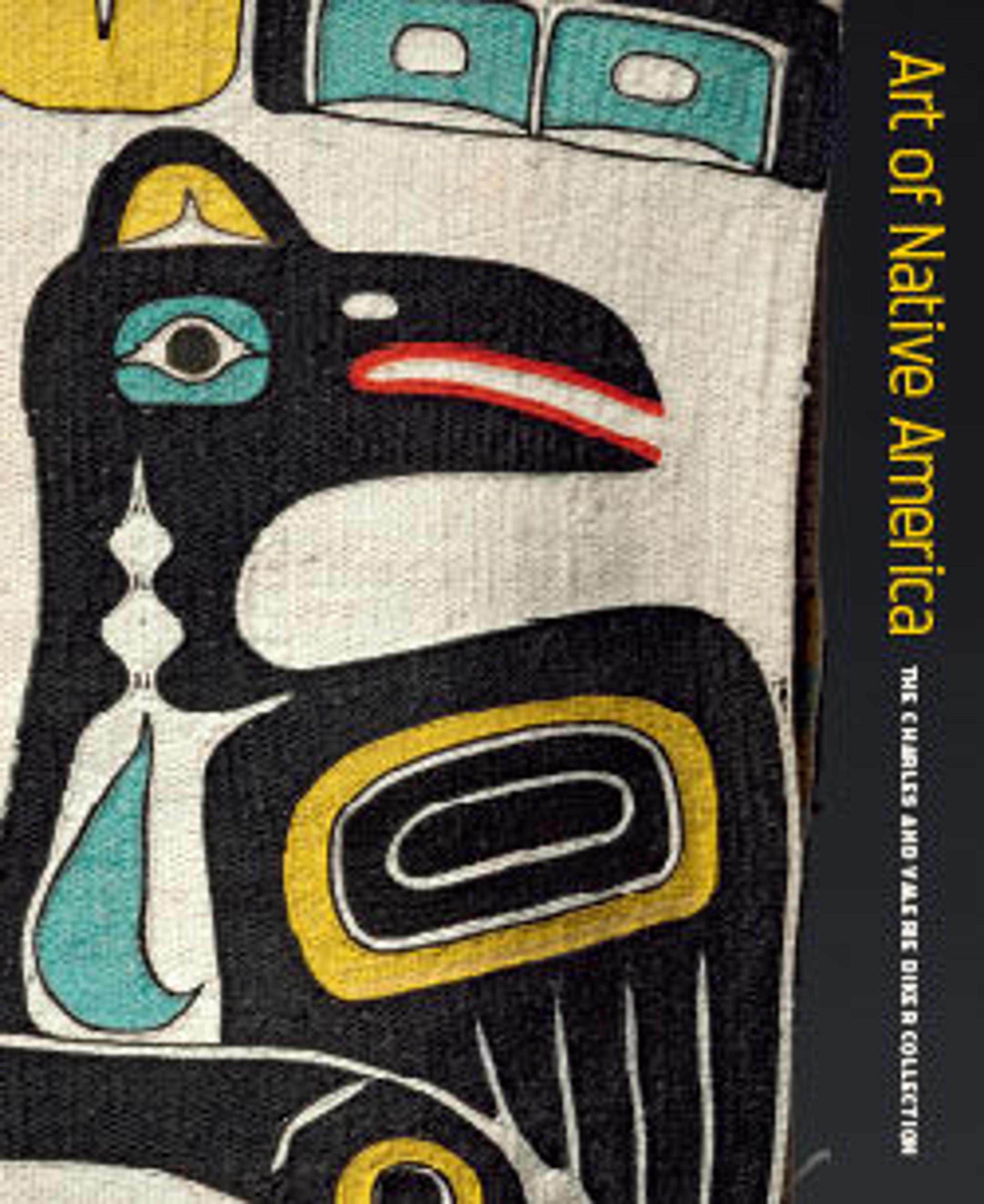Maskette
Pacific Northwest clan leaders hold potlatch ceremonies to renew their social status through a costly feast and gift exchange. Traditionally, the host would accumulate food, clothing, and trade goods, such as marine shells and copper, and commission specialized artists to create dance masks to further display this wealth. This ritual maskette or frontlet is pierced around the edges to affix it to a headdress assemblage. The blindingly white teeth are made of highly valued opercula, a hard plug that allows the marine mollusk to close its shell. The mask’s pointy nose may reference the beak of a bird or the mouth of an octopus.
Artwork Details
- Title: Maskette
- Date: ca. 1780–1830
- Geography: Possibly made in British Columbia, Canada; Possibly made in Alaska, United States
- Culture: Tsimshian or Tlingit, Native American
- Medium: Wood, copper, shell, and pigment
- Dimensions: 6 1/2 × 5 3/4 × 3 3/4 in. (16.5 × 14.6 × 9.5 cm)
- Credit Line: The Charles and Valerie Diker Collection of Native American Art, Gift of Charles and Valerie Diker, 2021
- Object Number: 2021.434.2
- Curatorial Department: The American Wing
More Artwork
Research Resources
The Met provides unparalleled resources for research and welcomes an international community of students and scholars. The Met's Open Access API is where creators and researchers can connect to the The Met collection. Open Access data and public domain images are available for unrestricted commercial and noncommercial use without permission or fee.
To request images under copyright and other restrictions, please use this Image Request form.
Feedback
We continue to research and examine historical and cultural context for objects in The Met collection. If you have comments or questions about this object record, please complete and submit this form. The Museum looks forward to receiving your comments.
